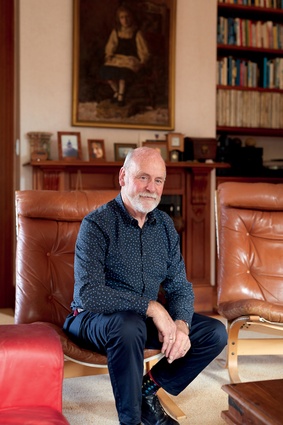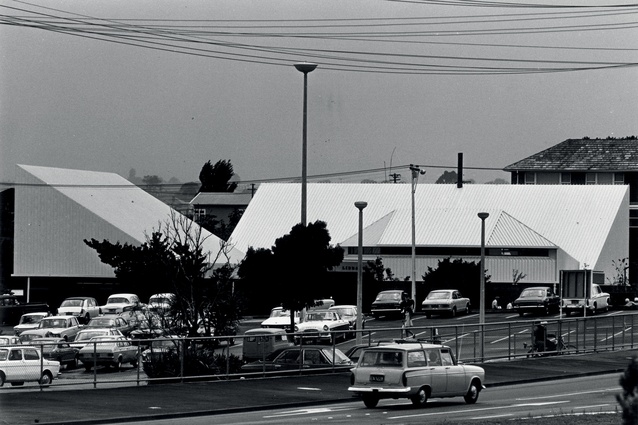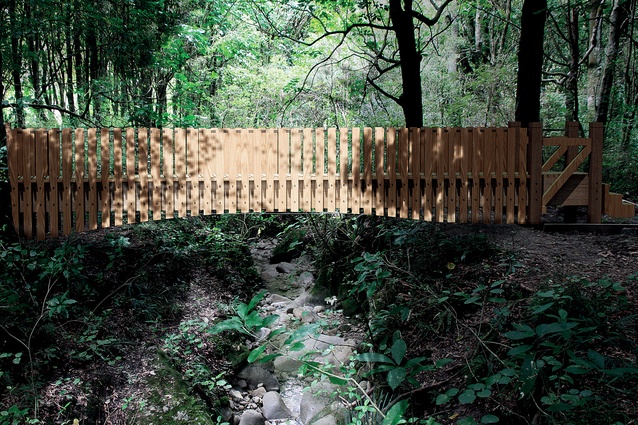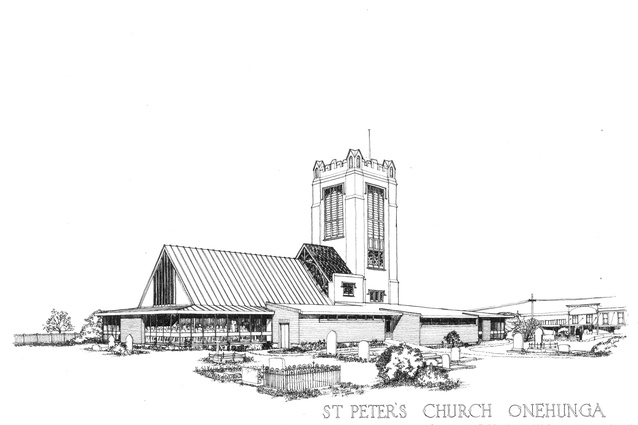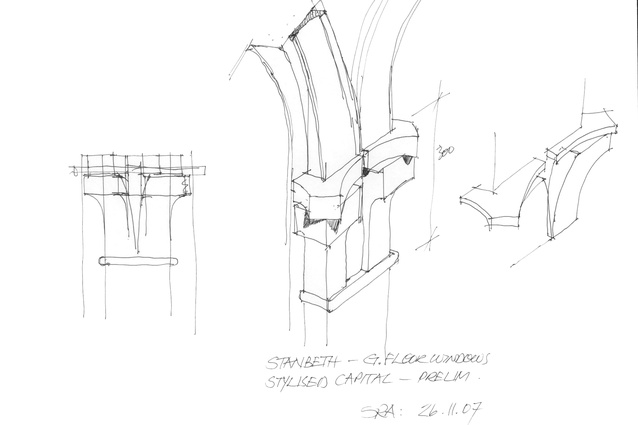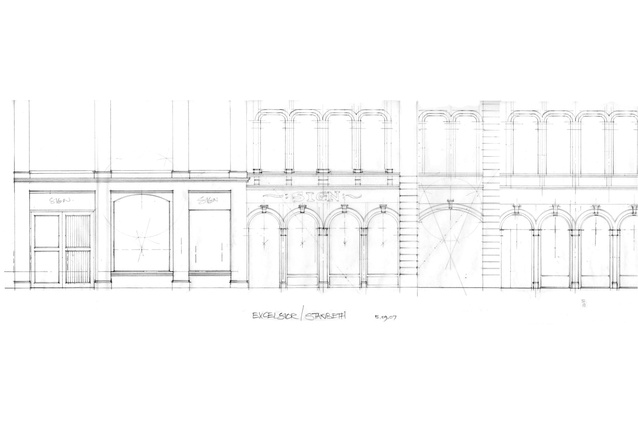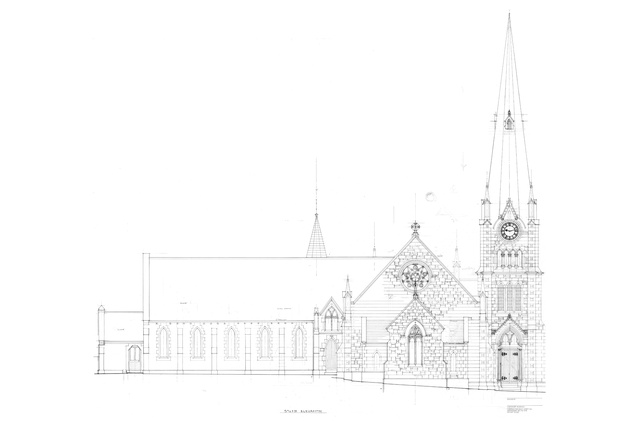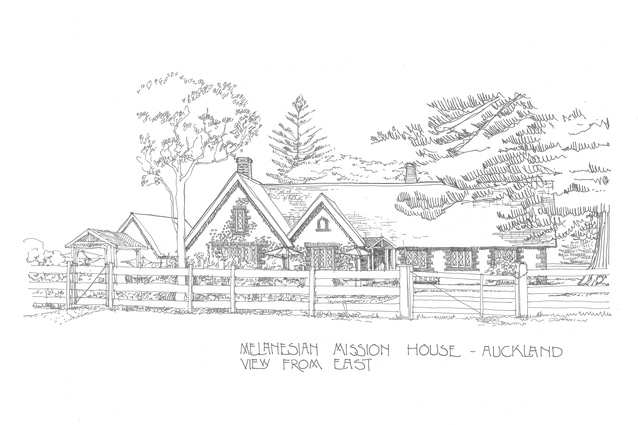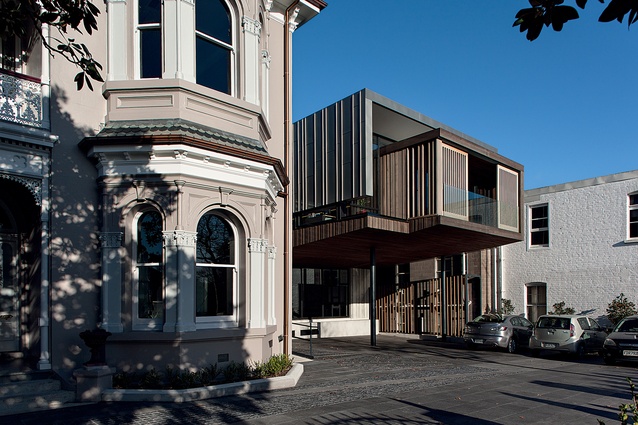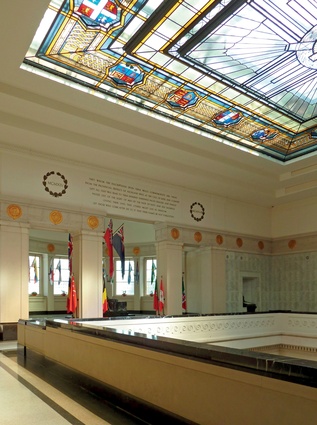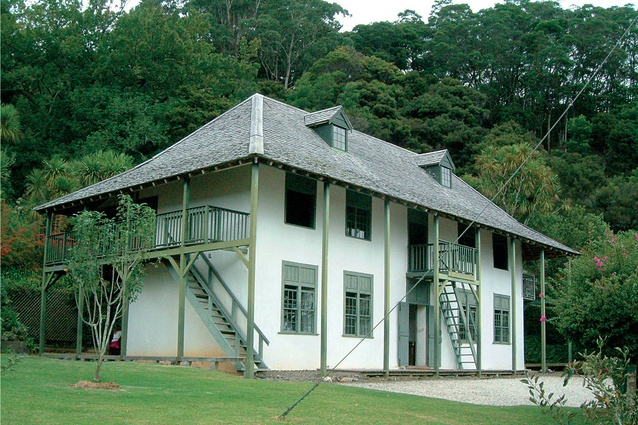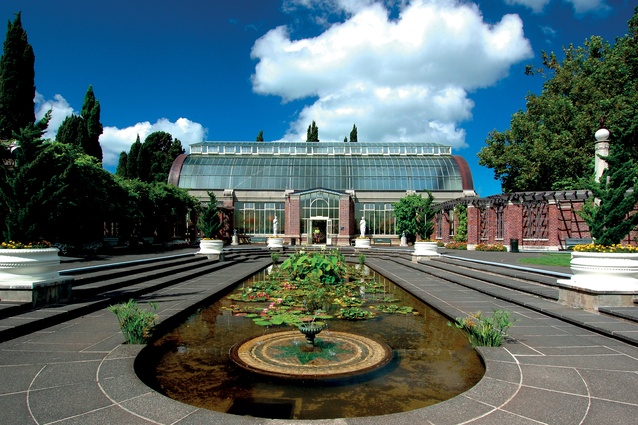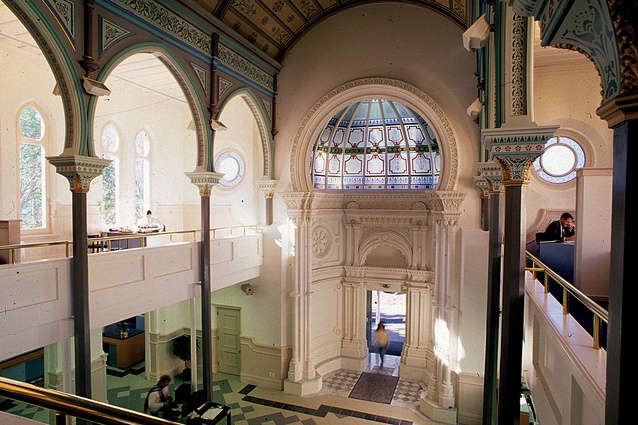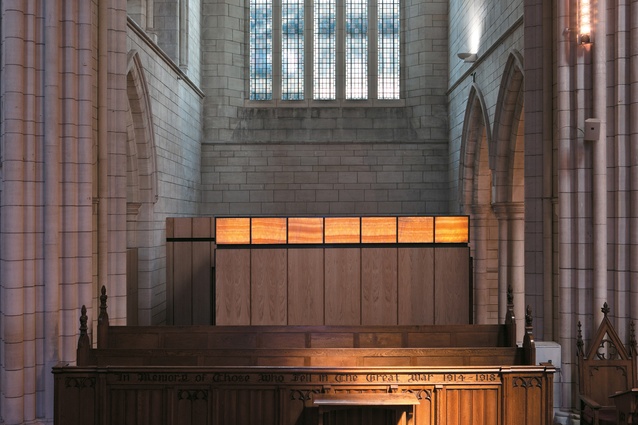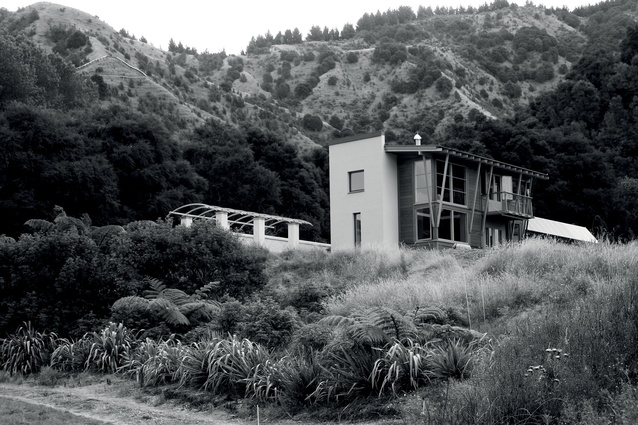2018 Gold Medal winner: Jeremy Salmond
Justine Harvey interviews the 2018 Gold Medal winner, Jeremy Salmond, at his studio in Devonport, Auckland.
Justine Harvey (JH): Where did you grow up and what led you to the field of architecture?
Jeremy Salmond (JS): I was born in Dunedin and raised in Gore. I love Dunedin and always thought I’d end up going back there. I think I knew when I was 13 that I was going to be an architect. The fact that my uncle and my grandfather were both architects may have influenced me. I left school and went to Otago to do my intermediate and, meanwhile, gained work experience through the Ministry of Works.
There, I learned to draw properly, which was great for when I arrived at the Auckland school [of Architecture and Planning] but, also, slightly constipating. I was too pragmatic and it was quite hard to liberate, to let go for design. When I was a kid at school, my uncle gave me a bunch of copies of the prospectus for the School of Architecture. I read these avidly, cover to cover, and looked at all the drawings. Drawing’s always been a thing for me – I found them hugely inspirational.
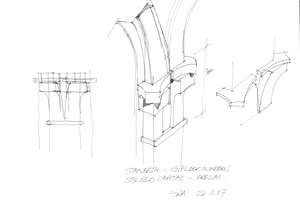
JH: Do you have many drawings now?
JS: I have thousands. In my capacity as the old fart of the office, I’ve always hammered everyone about drawing quality. Drawing is a way of understanding and analysing. We’re doing CAD, of course, but we’re using drawing for analysis and presentations. I’ve decided not to attempt to be a CAD convert because I still love the drawing process. In the office, I’m becoming too expensive to be allowed to do production drawings but I do lots of quick sketches and problem-solving through drawing.
JH: The quick sketches are quite telling in a way.
JS: Well, there’s a fondness for these when showing a big project. You show the eminent architect’s original sketch and say, “Oh, what genius!” even though he probably did it afterwards! Anyway, after Dunedin, eventually I came to Auckland, where I took five or six years to do four professional years. When I was still studying, I worked for a firm called Patterson, Lewis and Sutcliffe.
When I graduated, my first employer was Morton Jordan. Morton was a specialist in concrete block and timber frame, with big slabby, slidey windows, sliding doors and things. He also made a proprietary form of shelving called ladder shelving. Part of my job was running around South Auckland, picking up these metal frames from the welder and packing them up in boxes. At the same time, I had some nice houses to do with him and I learned a lot.
One of the things I remember him saying to me and I realise, in my old-fartism, that I now do the same, is that you can draw a detail to understand what happens when you get to the end of it. How does it go around the corner? How does it stop? Because we’re all great at drawing details but you have to understand what happens when it comes to an end.
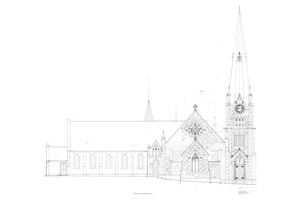
And I suppose, in my practice and career, I’ve always been obsessed with detail: how things go together and what the architectural impact of the detail is. Every line you draw on a piece of paper usually has a consequence on the face of the building or some part of the building.
JH: Anyone who’s really good at what they do has to have that eye for detail. I think that’s the difference between being good and being really bloody good.
JS: Yes, it’s one thing to have a heroic concept; it’s another thing to make it hold together. And the great thing about working with old buildings is that you’re benefiting from generations of traditional practice and, yet, constant innovations. You also learn all the time from the way problems are solved, including the more prosaic things, like whether or not you’re keeping water out.
JH: What was your first big project?
JS: I was working at Gillespie, Newman and Pearce, and they wanted to develop a retirement centre down in Te Kauwhata. With succession planning on the farms in the area, the next generation took over and the oldies had to leave. Many of them moved to Hamilton or Auckland, where they died of boredom or loneliness. But they had a greenfield site next to the town centre and the layout of the site and the pensioner houses became my job.
There were also sites for people who had the resources to build their own homes. They were very tightly constrained for budget and materials, so you could use only New Zealand materials. For me, it was a remarkable insight into how a determined group of people in rural New Zealand can cause something to happen. They were amazingly resourceful and super-nice people to deal with.
JH: And what came next?
JS: I felt the need to do my master’s degree and, at the end of that process, Anne [Jeremy’s wife, Dame Anne Salmond] had a sabbatical which took us to Cambridge in the UK; they were special years in a family’s life. It was fantastic.
When we came back, I started working for myself but then went back to Newman Pearce and became a partner. My book was published in 1986 and I started getting all this residential work to do but it wasn’t a good fit for Newman Pearce so I came back to Devonport after an amiable dissolution of the company. Then I established myself here and found an office down in the shops.
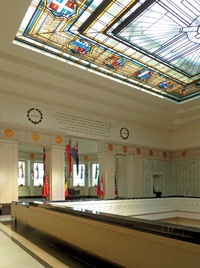
One of the really good jobs I had back then was re-landscaping Devonport’s main street, Victoria Road. This was 30 years ago and it’s still there. Being me, with my fondness for drawing and my anal approach to detail, I did an analysis of the whole street. I located every lamp post, manhole cover, water hydrant, postbox and inspection chamber. I developed my aesthetic and my materials, then I just drew the whole thing at 1:50 scale.
And the other project of that period was to replace the changing shed on the waterfront, which was a fairly prosaic concrete-block structure just sitting on the waterfront obscuring views of the water. So, I designed the new changing sheds, which was half in the ground and half out. That’s still there but it badly needs maintenance. I received a local award and I was pleased with that.
In about 1986, I had a chance to work on the Old Synagogue on Princes Street. I was asked to do a conservation plan for the building, which was one of my first. At the same time, I met an American couple in their 70s, who were both conservation architects: Henry and Lorraine Chambers. They opened a door for me into what conservation was about. They were walking laboratories. They had bundles of sieves and could do mortar samples on the hoof. They had recipes for fixing wood that was all crazed with sun and they put me in touch with all sorts of literature in North America. Suddenly, I was starting to think about being involved as a conservation architect or a heritage architect.
Then, in 1990, the work on Auckland Museum began. They had commissioned a conservation plan from an Australian architect, an eminent OBE, and his was a very conservative conservation plan. I was commissioned to rethink it from scratch. The whole point of a conservation plan is to understand what’s significant and to show how the process of change can be accommodated.
The museum was designed in the 1920s – naturally ventilated and illuminated, which is anathema now to museologists. Now, everything has to be controlled: lighting, atmosphere and so on. So, they were trying to figure out how to adapt to become a modern museum – without completely buggering up the heritage qualities. We’ve been working on the museum ever since and still are.
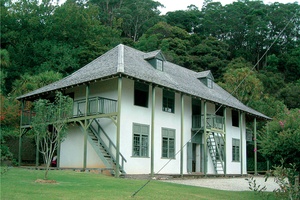
JH: Which of the projects are your personal favourites?
JS: Pompallier House is up there; it was a full heritage restoration. Civic Theatre was another one where we worked with Jasmax. Also, the Winter Gardens, which we restored because of changing seismic standards. The Chief Post Office and, again, that’s gone through many iterations. First, it was adapted as part of the Britomart terminal and, now, it’s been readapted as part of the CRL underground. Huge change!
The other one we’ve been associated with since 1992 is St Matthew-in-the-City. The most recent one is probably the Melanesian Mission in Mission Bay, which we worked on with Herbst Architects, who designed the pavilion there. Part of the challenge with that project was to do the seismic stuff without buggering up the building.
JH: That must be a big issue in most of your restoration projects.
JS: It’s detail; it’s detail. I worked closely with the engineer and I like to think the success of the job is that you don’t know we’ve been there. That’s the ultimate arrogance of the conservation architect – to achieve what you want and for it not to be apparent is a real success.
Another key project for me is the house I designed in Gisborne, which wouldn’t usually be seen as Gold Medal material but it’s simply the best chance I’ve had to give full expression to what I think. It is also a landscape project, as is the [Longbush] Ecosanctuary my wife and I have created. I’ve also designed a bridge there and worked with Sarosh Mulla who designed the Welcome Shelter for outdoor education – he’s fantastic.
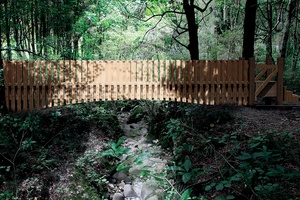
JH: How often do you and Anne flit between Auckland and Gisborne?
JS: We do a week each month in Gisborne. This is instead of retiring. It’s just enormously exciting. It’s a real recharge and brings back the ability to think as a design architect. Because, I have to say, although I’ve worked with heritage, I’ve never stopped being a design architect.
I wanted to be an architect because I was going to save the world with modern architecture. Inadvertently, I went straight into heritage – but I’ve always believed that design is a key ingredient in working with heritage. Whatever you do, you have to regard the intrinsic design of the place you’re working on. Where you make change, it has to be really considered, most particularly where you make some new design intervention.
JH: How long have you had the Ecosanctuary?
JS: It’s been 20 years now. We’re slightly shocked by that! Buying it was kind of like a middle-aged rush of blood to the head. It was partly an escape route from Auckland but we’d always had a preoccupation with landscape and gardening. And, also, this was the site of some of our early encounters with each other. We were down there in 1998, went up the road to have a look and found a ‘For Sale’ sign on the fence. It said, “Ideal for Forestry or Grazing.” And we said: “Bugger that”. We put in an offer and got a subdivision off the whole parcel that was for sale.
JH: So how did the conservation aspect arise?
JS: Well, we had to say, “Why are we here?” Why are we doing this?” And certainly, it was about loving the landscape so we immediately started planting. We met a remarkable guy, who was a refugee from DoC, and we employed him to start catching pests. Then, when we fenced off this bit of bush and started taking possums and rats out – we had about 180 of each in the first year – suddenly, the bush exploded into life.
It was a huge education just seeing what happened. Then, we just became more stupidly ambitious. I designed a bridge, which was built by the local EIT — Eastern Institute of Technology carpentry course. They hadn’t built anything like this before so they were blown away, and so was I. It’s encouraged us to be more ambitious than not.
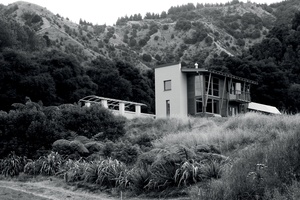
JH: Your career has very much been about collaboration. What does that mean to you?
JS: I like to be able to contribute to design, not by pretending I’m the designer but by critique-as-you-go, and suggesting why that won’t work when you could be doing this, or have you thought of that? So, it’s those collaborations, from the point of view of a design architect, as much as of a conservation architect.
It’s a balance of not imposing yourself on the design process but being receptive to ideas and being able to enthuse. And also being able, when you feel necessary, to say, “That’s not going to fly.” In a way, you’re the canary in the cage. You’re the early-warning system for any trouble you might have at Council later on because councils have become much more rigorous about heritage.
JH: So, what do you have up your sleeve for the future?
JS: Longbush is never ending. The joy of Longbush is that it will never be finished. It’ll either keep me alive or kill me but, either way, it will be quite cool. I’m attracted to that. But, because we spend a week a month there, I don’t run projects where you need to be there all the time. I was down in Dunedin looking at a church that’s being restored, recently, and I can do all of this on my own. The enquiries keep coming so that’s good. There’s no target date at the moment. It’s nice to think I could just go on indefinitely.
See the full list of winners of the 2018 New Zealand Architecture Awards here.

